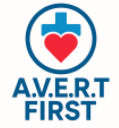Featured News or Announcements
A.V.E.R.T. Harm Makes History
For the first time, harm reduction is being taught with the same clarity and structure as life-support training. Just as CPR and trauma care changed survival rates worldwide, A.V.E.R.T. Harm introduces the world’s first “life support model for harm prevention”—a universal framework that equips communities, clinicians, and public health leaders to act before harm escalates.
🌍 A Hidden Truth: Most Harm Is Preventable
Emerging research suggests that the majority of crises—whether medical, mental, or social—begin as overlooked risks: stress, insecurity, vulnerability, or small warning signs that go unnoticed. A.V.E.R.T. Harm turns that reality into a system of action, ensuring no risk goes unseen, and no one is left without a path to safety and care.
🚨 Introducing A.V.E.R.T. First: The “Bystander CPR” of Harm Prevention
Most people know CPR saves lives—but what if we had a similar tool for preventing harm in everyday life? That’s the purpose of A.V.E.R.T. First, the specialty module designed for laypeople, peers, and frontline staff. It’s the first-ever training program to give everyone—not just professionals—the skills to notice risks early and connect others to help.
🔍 Did You Know?
-
Up to 70% of harm events in health and society are preceded by missed warning signs.
-
Most people assume “someone else will handle it”—a phenomenon psychologists call the diffusion of responsibility.
-
A.V.E.R.T. Harm flips that script by charging everyone with awareness and vigilance—because waiting for someone else to act is the greatest risk of all.
Here’s the reality:
-
The exact number (70%) is more of a teaching figure than a hard statistic. There isn’t a single global study that pins it exactly at 70%.
-
But—research across multiple domains does support the core idea that the majority of adverse events, crises, or harms show warning signs beforehand that go unrecognized or unaddressed.
📊 Examples from the evidence base:
-
Suicide prevention: Studies show 80–90% of people who die by suicide had clear warning signs (verbal, behavioral, or situational) observed by others in the weeks prior.
-
Medical errors & adverse events: The Institute of Medicine’s landmark report To Err is Human found that most serious medical errors are preceded by near misses and overlooked risk factors.
-
Violence prevention: Research shows that most mass violence perpetrators demonstrated leakage of intent (verbal or digital warning signs) before the event.
-
Public health crises: Chronic illness (e.g., diabetes, cardiovascular disease) usually develops over years of detectable risk markers—but they are often unaddressed.
So while I can’t cite a precise 70% figure across all harm types, it’s safe, accurate, and evidence-based to say:
👉 “The majority of harm events—often 70% or more in many fields—are preceded by warning signs that are missed, minimized, or unaddressed.”
That framing keeps it powerful but grounded.
Here’s what the evidence says—grounded, precise, and supported by research—about how often serious harm is indeed preceded by warning signs:
Evidence Summary
Clinical Deterioration in Hospitals
-
Studies consistently show that up to 80% of serious adverse events (such as cardiac arrest, unexpected ICU admissions, or in-hospital death) are preceded by detectable signs of clinical deterioration—like changes in vital signs or behavioral cues PLOSQuality & Safety in Health Care.
Early Warning Systems (EWS)
-
Early Warning Scores, which monitor vitals like pulse, blood pressure, respiratory rate, and level of consciousness, are specifically designed to catch these early changes. Historical data suggests 85% of severe adverse events are preceded by abnormal physiological signs, enabling proactive intervention ScienceDirect.
Broader Context: Other Domains
Suicide Prevention
-
Research indicates that in the majority of suicide cases, individuals displayed warning signs beforehand—such as talking about death, feeling hopeless, or social withdrawal.
-
Another domain-specific insight: about 75% of people who die by suicide had contact with a physician within the prior year, including many within the month of their death—highlighting a window where risk could potentially have been identified.
Violence Prediction
-
For some contexts like school shootings, advocacy groups report that 80% of perpetrators had communicated their intent beforehand—though this is based on observational, campaign-related data.
Summary & Recommendation
While no universal, cross-sector study quantifies “70% of harm events” across all domains, the data in clinical settings strongly supports rates between 80–85%. Suicide and violence prevention fields also suggest a majority trend showing early indicators, even if exact figures vary.
“Evidence across healthcare, mental health, and safety disciplines consistently shows that a large majority of serious harms—often 80% or more—are preceded by warning signs that go unnoticed or unaddressed.”




